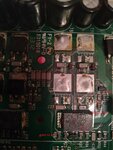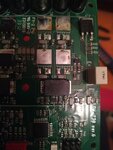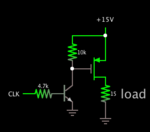VTI_16V
Member level 1
So i got electronic control box that controls 2 actuators for rising and lowering platform... The guy told me that one guy was inside and push the button for lowering while another one accidentaly pushed the button on the wireless remote for lifting the platform at the same time and control box stopped working... i was like, ok, probabbly short circuit on mosfets... i tested all the mosfets (IRLR3705), they are all ok, power supply ok, diodes also ok, transistors that controls mosfets also ok, but it just doesn't work... So i went down all to the mc-u, all the voltages are ok at the mcu... then another thing i dont understand... this H bridge, how does it works? i tracked down everything and i just don't get it how upper mosfets shift +12V from drain to source (drain on upper mosfets is constantly under 12V)? It has npn transistors for controlling upper mosfets and from my point of view that transistors connect ground to gates of upper mosfets but how this circuit turns ON thoose mosfets and shifts 12V to source? Sources of thoose 2 upper mosfets are going directly to actuator... I tried to trace if maybe it was multilayer board, but gates are not connected to anything except for thoose small NPN transistors... am i missing something obvious?




